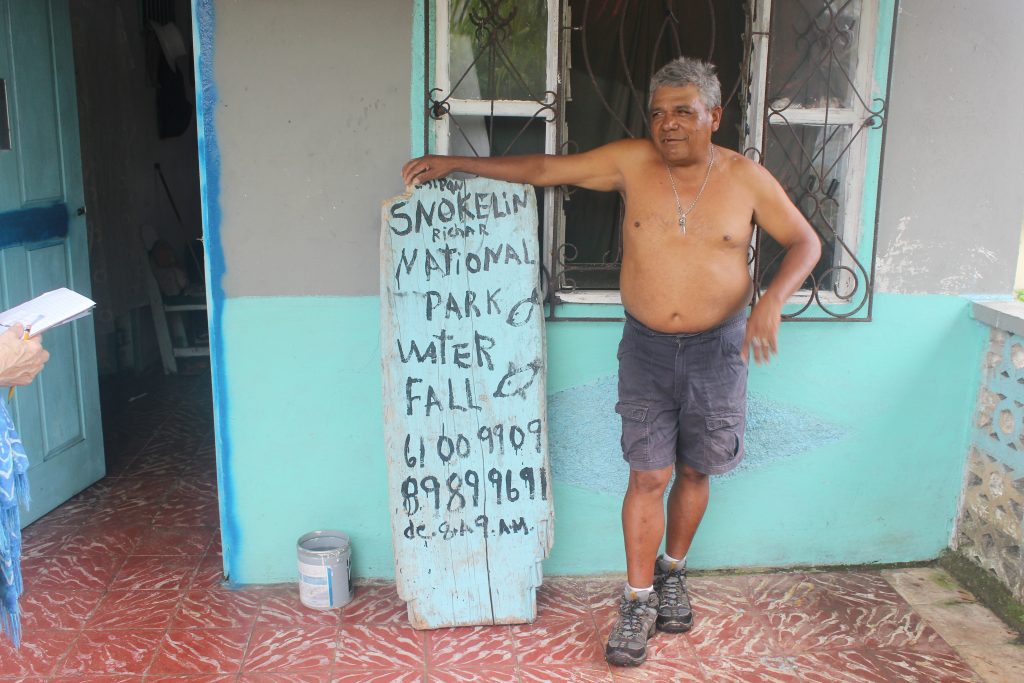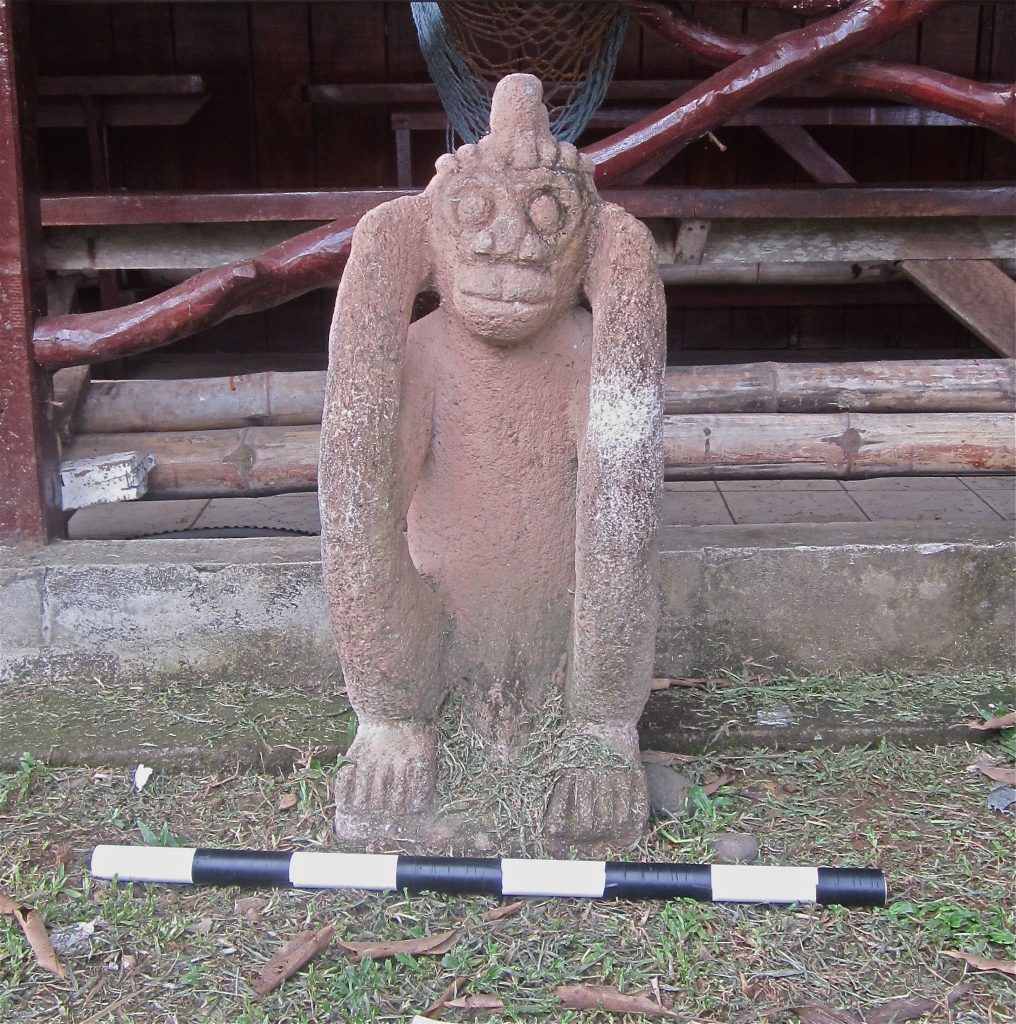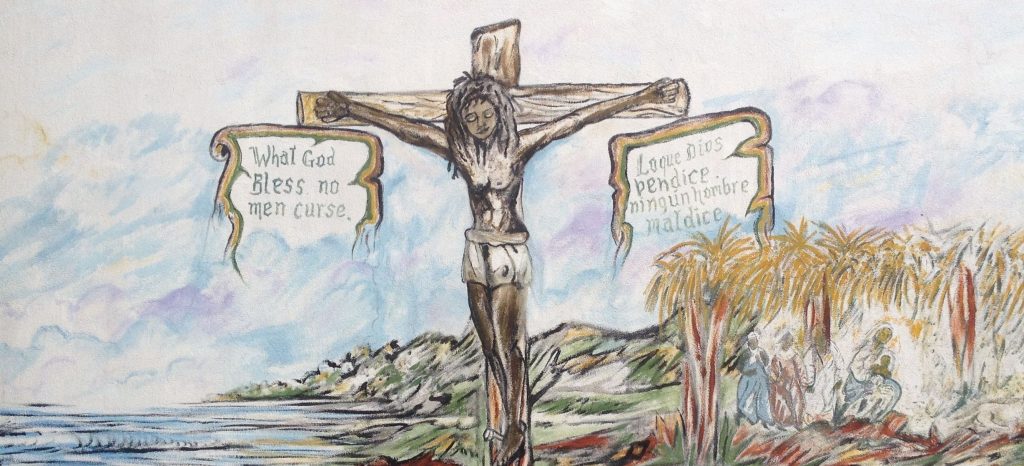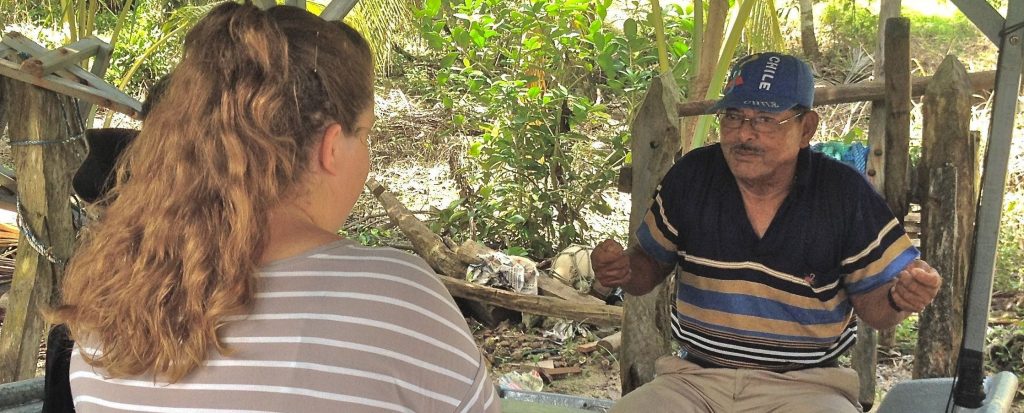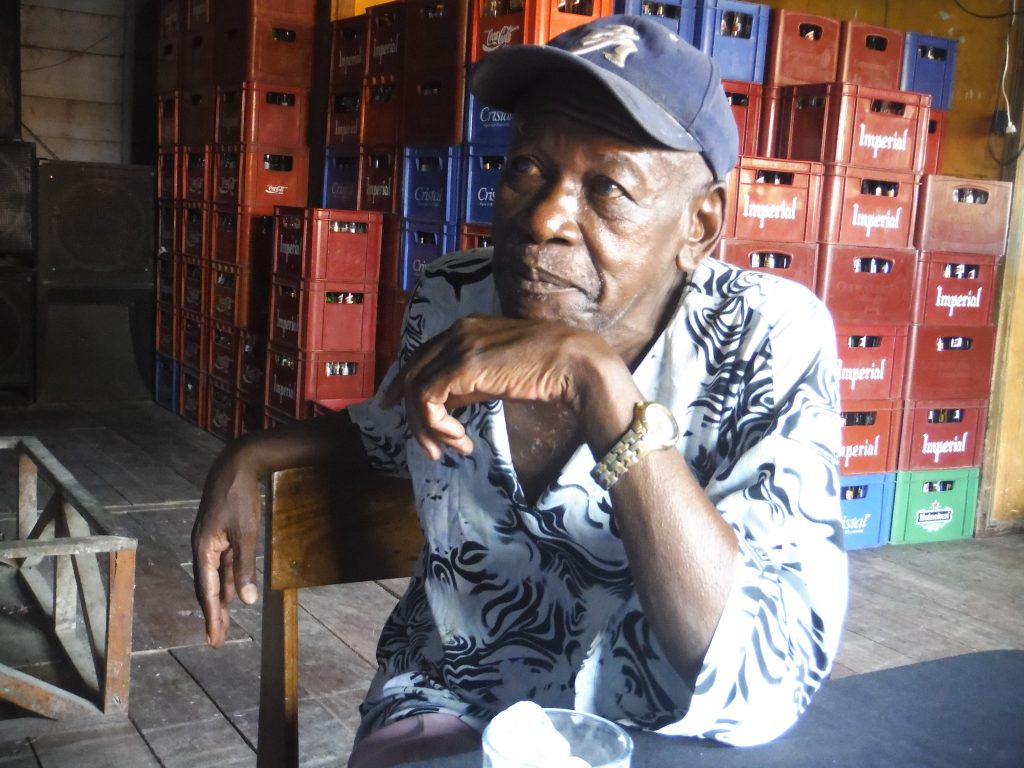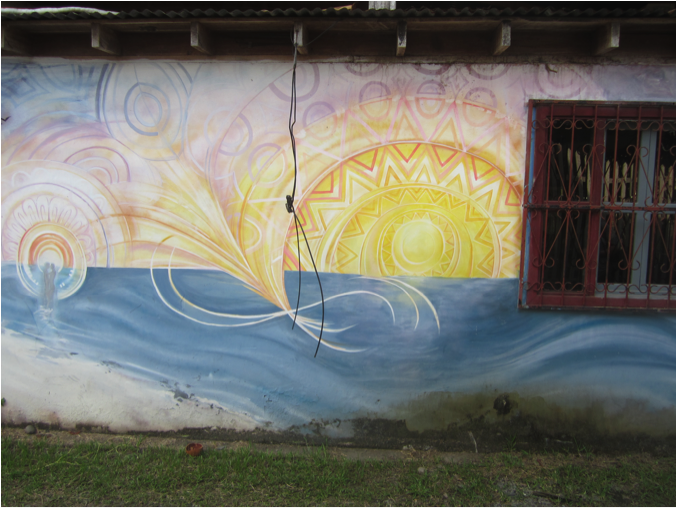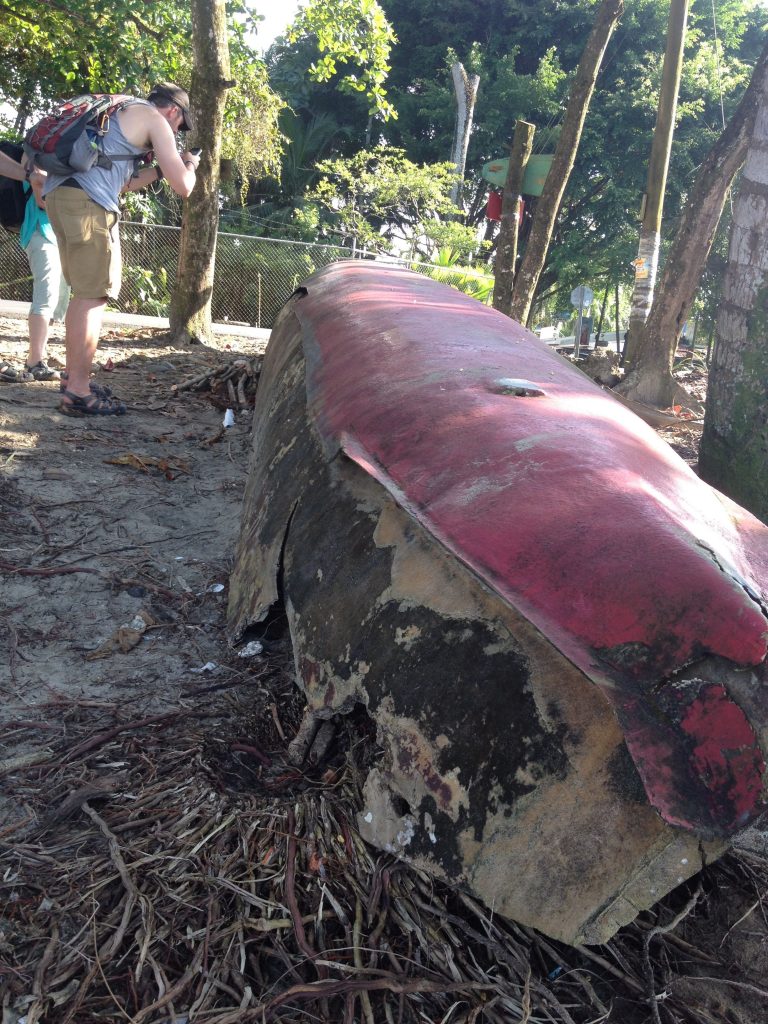Throughout our time in Costa Rica, we investigated local culture by taking a maritime cultural inventory. We wanted to understand how locals effect and are affected by the surrounding environment, specifically waterways and the vessels used to travel them.
Cahuita
One way we attempted to better understand the maritime cultural landscape was through exploration of Cahuita. Our goal was to locate art or statues that related to maritime activities and the history of the town. We photographed art and logged GPS waypoints of each point of interest. Some art depicted Punta Cahuita with its characteristic fishing boats. Other art included indigenous-style concrete statues, attesting to the rich history of the Cahuita area. Talking to locals and the artists themselves is next on our list of data collection.
Another facet of delving into the maritime landscape involved building friendships with local fishermen. Recording their boats in detail helps us understand construction, but talking to the fishermen helps us gain a deeper understanding of the cultural importance of these vessels. Indigenous turtle hunters initially settled Cahuita and fishing has always been an important part of Cahuita’s history. Don Manuel, an important first-generation fisherman in the community, was unbelievably helpful in explaining the style and history of fishing boats in Cahuita.
Fishing boats started as dugout canoes, constructed from one giant tree harvested from the mountains. These dugouts were heavy and expensive. Today, the boats are made from fiberglass, which typically comes from Mexico. The Instituto Nacional de Aprendizaje, INA, is located throughout Costa Rica and educates fishermen about boat construction and the tourism industry. The overall goal of this institution is to boost Costa Rica’s economy. INA provides boat plans and molds that the fishermen can use to create their boats. The fishermen name their boats according to their own personal preferences, drawing from movies, books, or important events in their lifetimes. To ensure future generations continue the fishing tradition, Association Asopel was created to give fishermen benefits and support.
The fishing boats were initially used on the rivers but with the creation of Cahuita National Park in the 1970s, the fishermen were limited to the ocean. Some fishermen received permission to conduct limited fishing within the park boundaries to continue their livelihoods and preserve their cultural history. The fishing boats are a means for the fishermen’s livelihoods: many of them rely on tourists for snorkeling trips on the reefs. Because of this reliance upon ecotourism, the fishermen are avid protectors of the reefs and fish. Conservation is an important facet of their interaction with the ecosystem.
We also had a conversation with Congo Man, a local Calypso musician. Calypso is a type of Afro-Caribbean music that traces its roots to West Africa. Congo Man shared stories of his life and Calypso music.
A link to Calypso music can be found here: https://www.youtube.com/watch?v=KeW9q6tSgr8
The video features Walter Ferguson, who is a famous musician from Panama who now lives in Cahuita.
Read more about Congo Man here: https://sites.ecu.edu/hist5530/2015/06/08/an-afternoon-with-congo-man/
Puerto Viejo
We also conducted a maritime cultural inventory in Puerto Viejo, looking for similar art as found in Cahuita. Students recorded about twenty-five GPS waypoints, mostly consisting of painted murals. Students also noted distinct building construction, a pier, and many snorkeling shops. There were no statues recorded in Puerto Viejo like there was in Cahuita. We hope to visit again to log more maritime-themed art and to record a specific dugout fishing boat that has been fiberglassed over.

